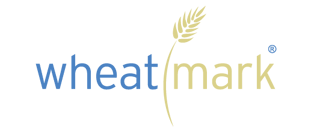Like most niches of the creative world, there is a learning curve to joining that community. The language book people speak is often one that can befuddle the new author. Here is a quick rundown of some important terms publishing professionals may say, ask your opinion about, or need you to understand.
image
Manuscript – The manuscript is the document that is your writing. It can be printed on paper, sketched on a napkin, or better yet, typed up in a Word document. When book people talk about a manuscript, they mean the work that will be transformed into a book.
Paginated interior – After your final manuscript is accepted, the next step in the publishing process is layout. The paginated interior is the end product of layout. All of the formatting choices the designer makes to mold your manuscript into a book is part of this. What the author receives to review after the layout process is the paginated interior. At this time, there shouldn’t be any major changes, just minor tweaks to make sentences correct.
Trim size – The trim size of a book is the physical footprint of the book when you look at it straight on. For example, some books are 5 inches wide and 8 inches tall, giving them a trim size of 5×8.
Chicago Manual of Style – The Chicago Manual of Style (CMS) is the industry standard for guidelines on how to present text within books. From formatting footnotes to how to write the name of a film to using commas, the CMS is the book industry’s rule book.
DPI – The dpi of a digital image has to do with the quality of the image. DPI stands for dots per inch and corresponds with how much ink a printer releases. The higher the dpi (that is, the more dots), the better the quality of the printed image, and the better your book will look. When images are going to be used on the cover or interior of a book, the standard dpi required is 300.
Verso and recto – When you open a book, the page on the left is the verso and the page on the right is the recto. This helps book designers determine placement.
Front matter – The front matter of a book consists of the parts, designated by CMS, that go at the beginning. The options are, in order, half-title page, verso of half-title page (blank), title page, copyright page, dedication, epigraph (the little poem or quote at the beginning of some books), table of contents, foreword, preface, acknowledgments, and sometimes the introduction.
Back matter – The back matter of a book is additional content beyond the chaptered sections that add to the reader’s understanding of the material. These sections can include the appendix, notes, glossary, bibliography, and index.
These are just a few terms the beginning author should learn in order to communicate with editors, designers, and other book people!

